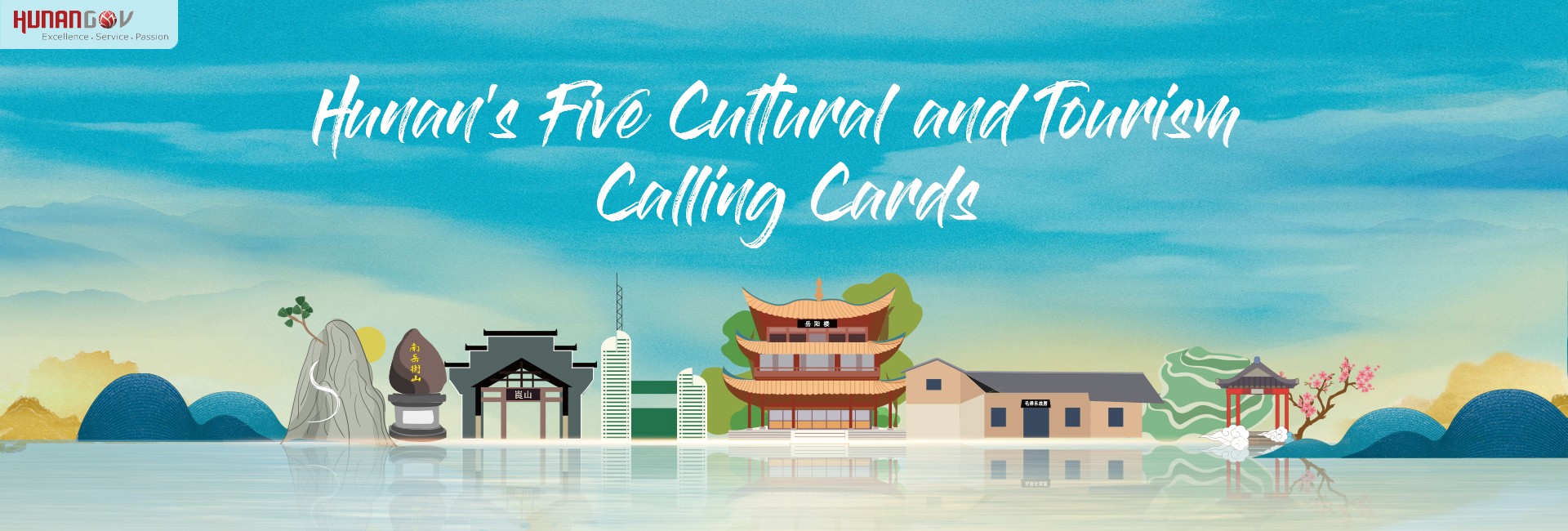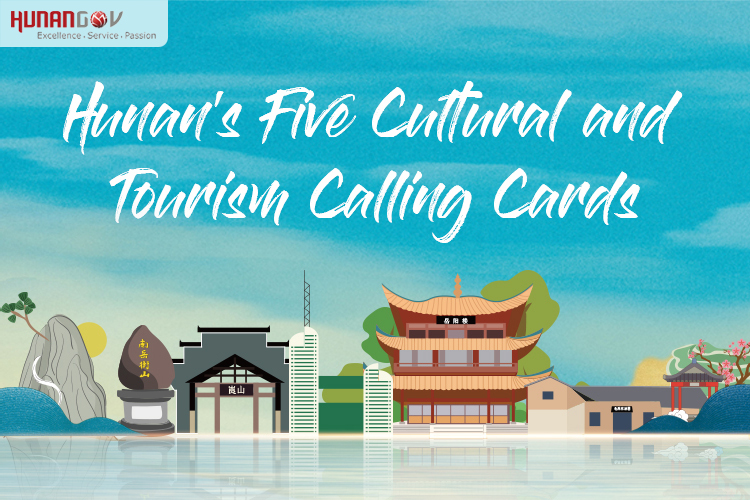

Remarkable Natural Beauty Represented by Zhangjiajie
This card assembles a number of mountains and lakes famous for breathtaking scenery, including Xiangjiang River, Dongjiang Lake, Langshan Mountain, Nanshan Scenic Area, Mangshan Mountain, Huping Mountain, Dongting Lake, and Liuye Lake.


Red or Revolutionary Tradition Represented by Shaoshan
Hunan is rich in red tourism resources and is home to 28 national red tourism sites. A world-class brand of the "hometowns of great personages" has been cultivated. A batch of exquisite red tourism areas have been developed, including Shazhou Village; Shibadong Village; the Red Army Long March Transfer Memorial Hall in the Tongdao Dong Autonomous County; the starting place of the Second Front Red Army's Long March in Sangzhi County; and, Wenjiashi Town in Liuyang City.


Urban Leisure Life Represented by Changsha
Changsha has been recognized as a UNESCO Creative City in media arts. The city boasts profound culture and rich tourism resources. It is a national internet-famous city, integrating tradition and modernity, classical elegance and contemporary fashion. Hunan has vigorously implemented the Strategy of "Strengthening the Provincial Capital" and has accelerated the development of Changsha into a famous cultural tourism city. The aim is to foster a world-class metropolitan area for tourism and leisure.


Farming Culture Represented by Chengtoushan Ancient Cultural Site
The Chengtoushan Ancient Cultural Site, where the world's earliest paddy rice fields were discovered, is known as "China's earliest established city". This card has tapped into cultural resources such as the Mausoleum of Emperor Yan, as well as Chinese scientist Yuan Longping, the "father of hybrid rice". Farming landscapes including Goulan Yao Village, the Ziquejie Terraced Fields, and the Shanbei Terraced Fields, are fully explored to better tell Hunan's farming stories. A number of world-class farming cultural tourism brands have been built.


History and Culture Represented by Hengshan Mountain
Hengshan Mountain is among the first batch of national cultural heritage items and national natural heritage items, as one of the "Five Great Mountains" of China. Hunan continues to develop a group of world-class historical and cultural tourism sites, including Yueyang Tower, Yuelu Academy, Tianxin Pavilion, Hunan Museum, Shigu Academy, the Laosicheng Site, Jiuyi Mountain, and Fenghuang Ancient Town.


